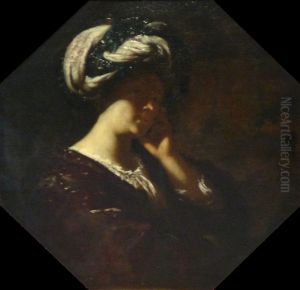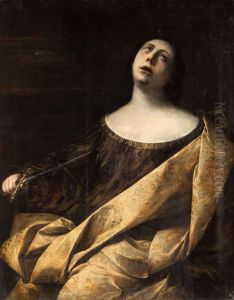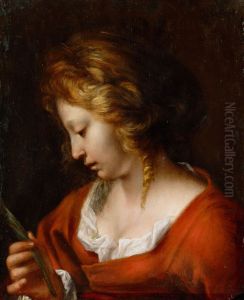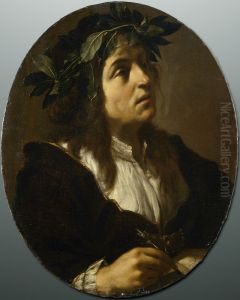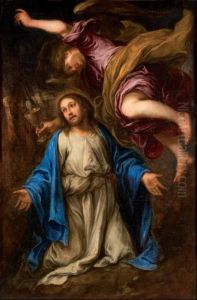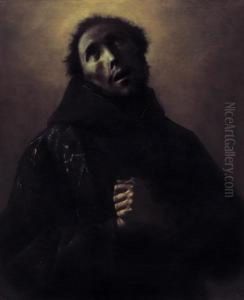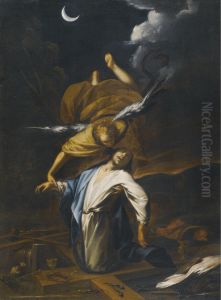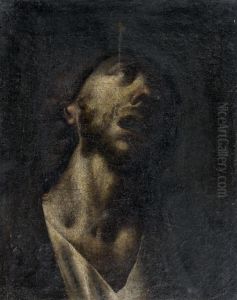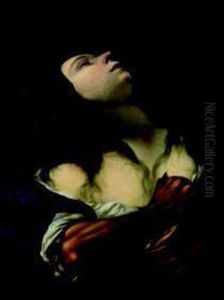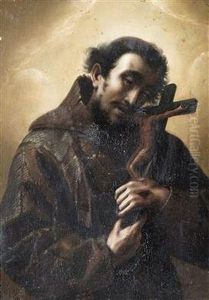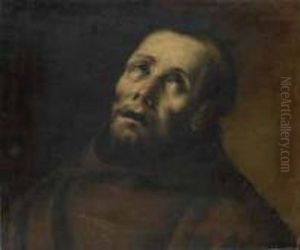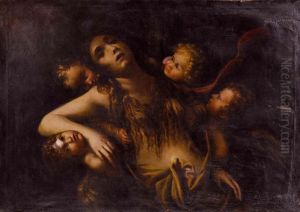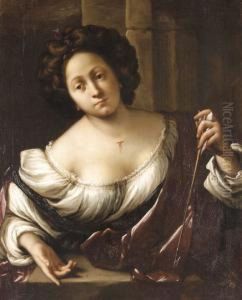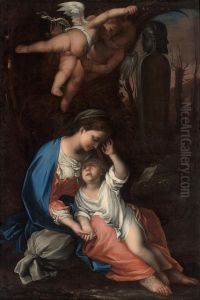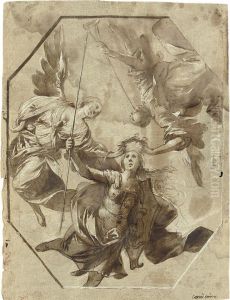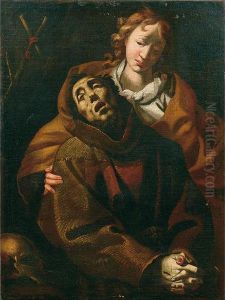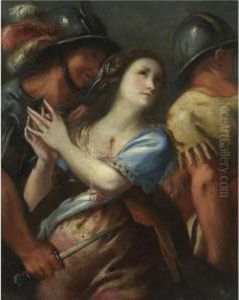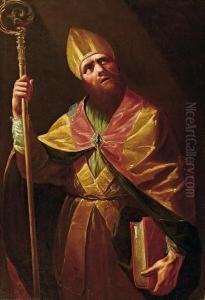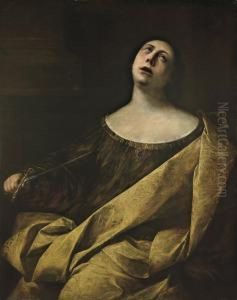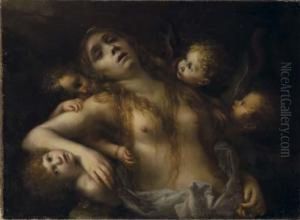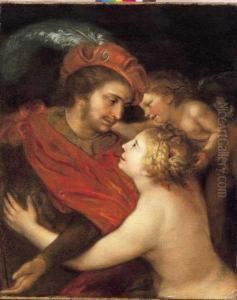Francesco Cairo Paintings
Francesco Cairo was an Italian Baroque painter active mainly in Lombardy and Piedmont during the 17th century. Born in Milan in 1607, Cairo initially trained under the painter Simone Peterzano, who was also the master of Caravaggio. Cairo's early works are noted for their dynamic compositions and vivid chiaroscuro, a technique that he may have been inspired to adopt through the influence of Caravaggio's dramatic contrasts of light and dark.
Cairo quickly gained recognition for his talent and was appointed court painter by the Duke of Savoy in Turin. This prestigious position provided him with the opportunity to paint portraits of nobility and to work on religious commissions, which were highly sought after during the Counter-Reformation period. His portraits are particularly appreciated for their realism and psychological depth, often imbued with a certain melancholy.
In the 1630s, Cairo spent a brief period in Rome where he was exposed to the works of other Baroque masters, which further influenced his artistic style. Upon returning to Milan, his style evolved, showing a greater emphasis on elegance and a softer approach to his subjects. Cairo's later works are characterized by more refined and graceful figures, a departure from the intense emotionalism of his earlier pieces.
Cairo's contribution to Baroque art is significant, and he is remembered for his ability to blend northern Italian and Roman stylistic elements. His work includes a variety of subjects, from mythological scenes to religious narratives, and his skill in handling different genres helped establish his reputation as one of the leading painters of his time.
Despite his success, Francesco Cairo's work was eventually overshadowed by the emergence of other artists, and for a time, he was largely forgotten. However, art historical scholarship in the 20th century has revived interest in his oeuvre, recognizing Cairo's place in the broader context of Baroque painting. Francesco Cairo passed away in Milan in 1665, leaving behind a legacy that continues to be appreciated for its emotional resonance and technical mastery.
